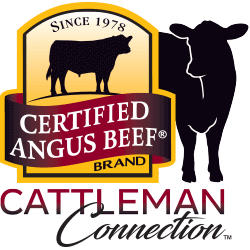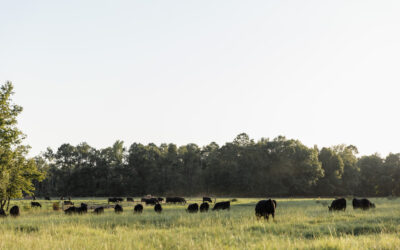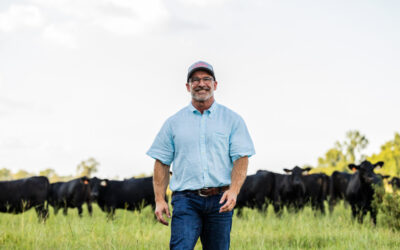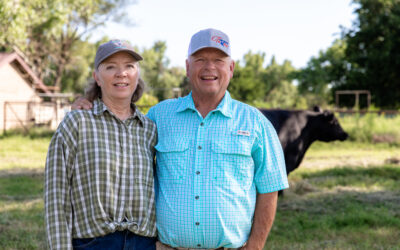
Purpose Follows Passion
Renowned meat scientist Dr. Gary Smith honored with CAB Industry Achievement Award.
by Lindsay Graber Runft
August 2025
A chance opportunity. A change in career direction. And meat science was changed forever. Dr. Gary Smith originally had no plans to become a meat scientist. But thank goodness he did.
Under Smith’s guidance, the meat science discipline has advanced by leaps and bounds. From food safety to quality beef production, it could be argued that his research findings helped save the beef industry in some of its most challenging times. College students were educated, inspired and trained to be top-notch leaders. The “Dean of Meat Scientists,” a renowned researcher and educator, has never shied away from getting in the trenches and putting in the work.
For the indelible mark he left on meat science and the beef community, Smith earned the 2025 Certified Angus Beef (CAB) Industry Achievement Award, presented at CAB’s Feeding Quality Forum.
A lasting impression
Smith’s first exposure to protein processing was during his childhood, when his family would gather to harvest livestock and poultry for meat. From cattle and hogs to chickens and turkeys, generations would work together, without electricity, to get the job done.
“He grew up hard, and he worked hard, because he didn’t know any better,” Dr. Brad Morgan, vice president of research and development at IQ Foods, says.
In 1950, drought hit Smith’s home state of Oklahoma, nearly collapsing the family farm in Caddo County. His family struggled, but survived, before moving to California.
Those were tough circumstances. Witnessing the challenges of drought and socio-economic issues on the farm made an impression on Smith; one that would guide his efforts to increase profitability for farmers and ranchers.
When choosing a degree path, he settled on teaching agriculture. Thinking he would help other farm families earn “the money necessary to survive.”
After high school, Smith headed to California State University, Fresno (Fresno State) to pursue a bachelor’s degree in vocational agricultural education. He completed that degree, spent a year student-teaching high school agriculture classes and quickly decided it was not for him.
“I was trying to teach these kids how to weld, and they welded my striker to a table,” Smith remembers. “I had to go somewhere where people were a little more serious than that.”
At the encouragement of a college advisor, Smith returned to graduate school. He planned to finish a master’s degree and get back to teaching. But this time around, he’d be a junior college instructor.
Smith didn’t seek a meat science graduate program. But instead, animal breeding. He enjoyed an animal breeding course during his undergraduate studies; and thinking he’d get to work with sperm and ova, Smith applied to graduate school at Washington State University (WSU).
Although he finished his master’s studying genetics and reproduction, it was his time at WSU that set the pivot for Smith’s next chapter in meat science.
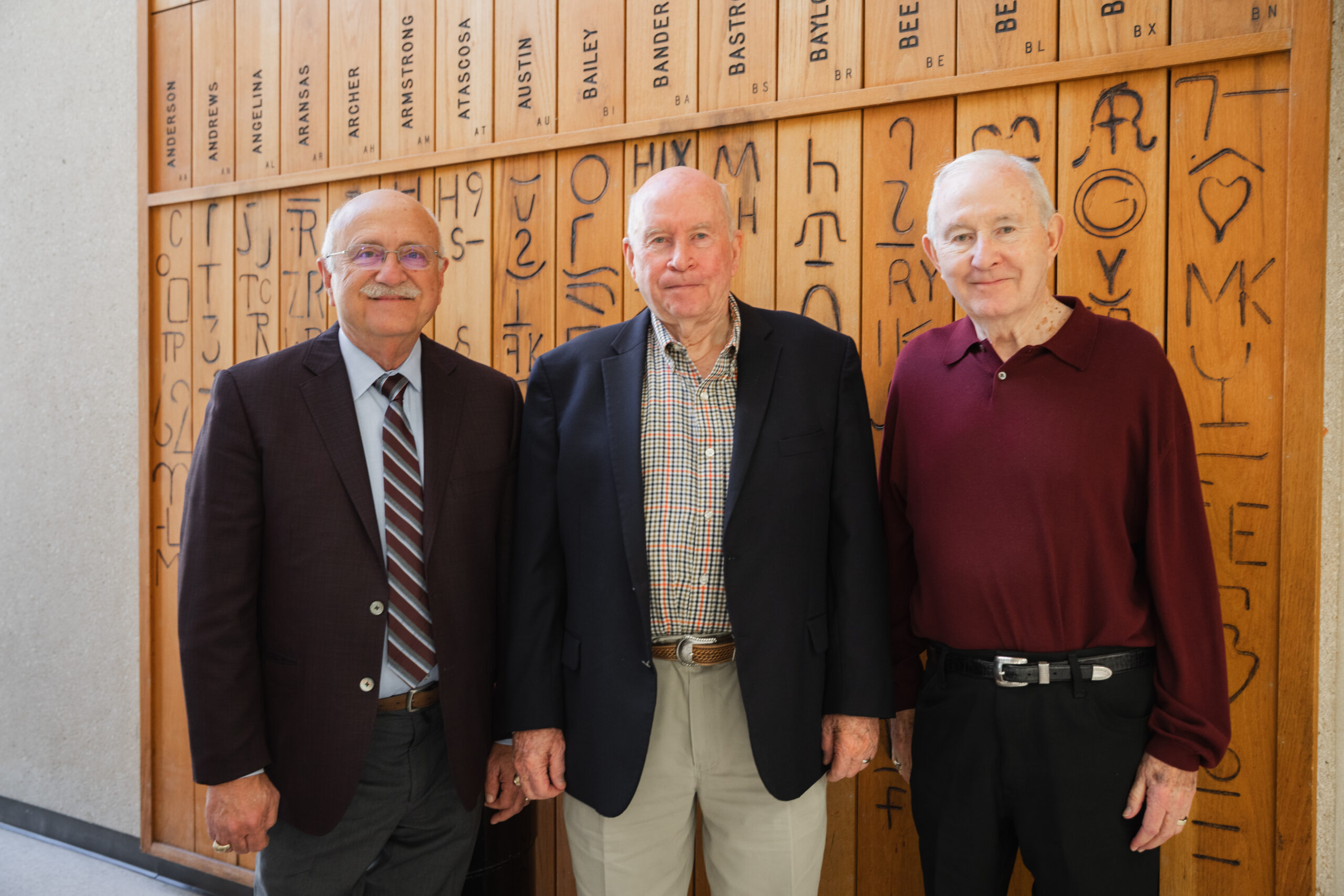
Caption: (Left to right) Dr. Jeffrey Savell, Dr. Bill Mies and Dr. Russell Cross each worked with Dr. Smith throughout their careers.
A chance opportunity
“You can start next week.”
It was the conversation that changed Smith’s education and career paths.
As evidenced, Smith originally had no plans to become a meat scientist. He’d dabbled in meat judging growing up and had only taken one meats course at Fresno State. While finishing graduate school at WSU, he was tapped to fill a vacant meat science professor position.
Dr. Gene Ensminger, the department head at WSU, verified that Smith had taken a meats class at Fresno State. When asked if he liked it, Smith responded, “No, sir.”
And when asked if he thought he could teach meat science, Smith responded, “Absolutely not.”
Ensminger ignored Smith’s lack of interest, instead giving him directions to start the new role the following week.
Smith began teaching multiple meat science courses each semester.
After 4 years at WSU, Smith took a leave of absence and went to Texas A&M University (Texas A&M). There, he completed a Ph.D. under famed animal scientist, O.D. Butler. And the rest is history, literally.
“I got into [meat science], I loved it and spent the rest of my life trying to be better at it,” Smith says.
Since his academic detour, Smith has been at the forefront of industry-changing research. A key to his success has been establishing a deep network of colleagues and peers within meat science, the beef community and the agriculture industry. Another key: Smith’s work ethic, passion and initiative to find solutions for those with “boots on the ground” in agriculture.
“The things I enjoyed the most were getting involved with people who were in the trenches trying to make a living, trying to make a better life for themselves and others,” Smith says. “We just helped them by finding ways to use research.”
Dr. Jeffrey Savell, Vice Chancellor and Dean, Agriculture and Life Sciences; University Distinguished Professor, Meat Science & E. M. “Manny” Rosenthal Chair in Animal Science at Texas A&M, describes Smith as the type of researcher who came in early and stayed late, one who had incredible attention to detail and valued integrity. He is enthusiastic, finding joy in the mundane, proving the passion he had for his work. All things Savell says contribute to Smith’s legacy.
In the span of 60 years, Smith’s body of work varied and expanded greatly. In the early years, he was educating people on how to cure meat with the right combination of salt, nitrate and nitrite. By retirement, his research had touched all corners of meat science—a nod to one of his top qualities, the ability to keep an ear to the ground on what problems existed and where solutions needed to be found.
Reflecting on finding solutions and putting them in practice for the beef community, Smith calls them “shifts.” Those “shifts” happened where the industry shifted to improve beef quality or made a shift to get to the right place with food safety.
The infamous War on Fat was fought during Smith’s research tenure. There was a belief that cattle had too much backfat and the issue needed to be rectified. Smith says, unfortunately, the industry almost went “too far.”
“I think we were scared to death we were going to lose beef over quality,” Smith says.
Getting rid of the waste fat, while simultaneously keeping the “taste fat,” proved to be the answer—
one that Smith says saved the beef industry. He credits 1980s research completed by Texas A&M colleagues, Savell, Cross and Mies for determining that beef needed marbling for taste and tenderness.
“It took us time,” Smith says. “Fortunately, there were people who went the right direction. CAB did it. The industry as a whole did it.”
Smith’s always been an advocate of value-based marketing, crediting CAB and Dr. Bobby VanStavern with creating a brand that effectively markets high-quality beef and simultaneously returns more dollars to ranchers’ pockets.
Smith has been at the forefront of studies on beef palatability, food safety, product packaging, beef shelf life, transoceanic shipment of meat, and food safety, including mitigation of E.coli 0157:H7, salmonella and listeria in packing plants.
Of all his research, Bill Mies, Professor Emeritus Texas A&M University, notes Smith’s work to improve beef quality as some of his most impactful.
“When I first started in the industry, steers were going out of the feedyard and grading 48 to 52% Choice,” Mies says. “And that’s just the way God made beef cattle.”
When the industry believed that to be the case, Smith knew it wasn’t necessarily so. Smith did the research and understood that to increase quality grade, the marbling had to be there. His research was geared toward increasing marbling and tenderness, creating a product that would compete with other protein options at the meat counter.
Alongside a team of researchers from Texas A&M and Colorado State University, Smith pioneered the National Beef Quality Audit. Other notable industry research projects include the International Beef Quality Audit, National Consumer Retail Beef Study, and exploring USDA beef quality and yield grade standards.
That research had a direct impact on the trajectory of CAB, exploring the importance of marbling and its influence on flavor and tenderness.
“A lot of people back at that time were skeptical,” Savell says. “He let the data support what he had to say.” And that paved the way for an industry’s understanding of quality and its importance.
Savell says Smith could bring research results to life—translating them and explaining what the research meant to others, with a “magic” unlike anyone else.
“Research can be very tedious, and I think he just never let that be part of it,” Savell says. “It’s what he wanted to do: collect information, interpret it, translate it, present it, get it published, and then go talk to people about it.”
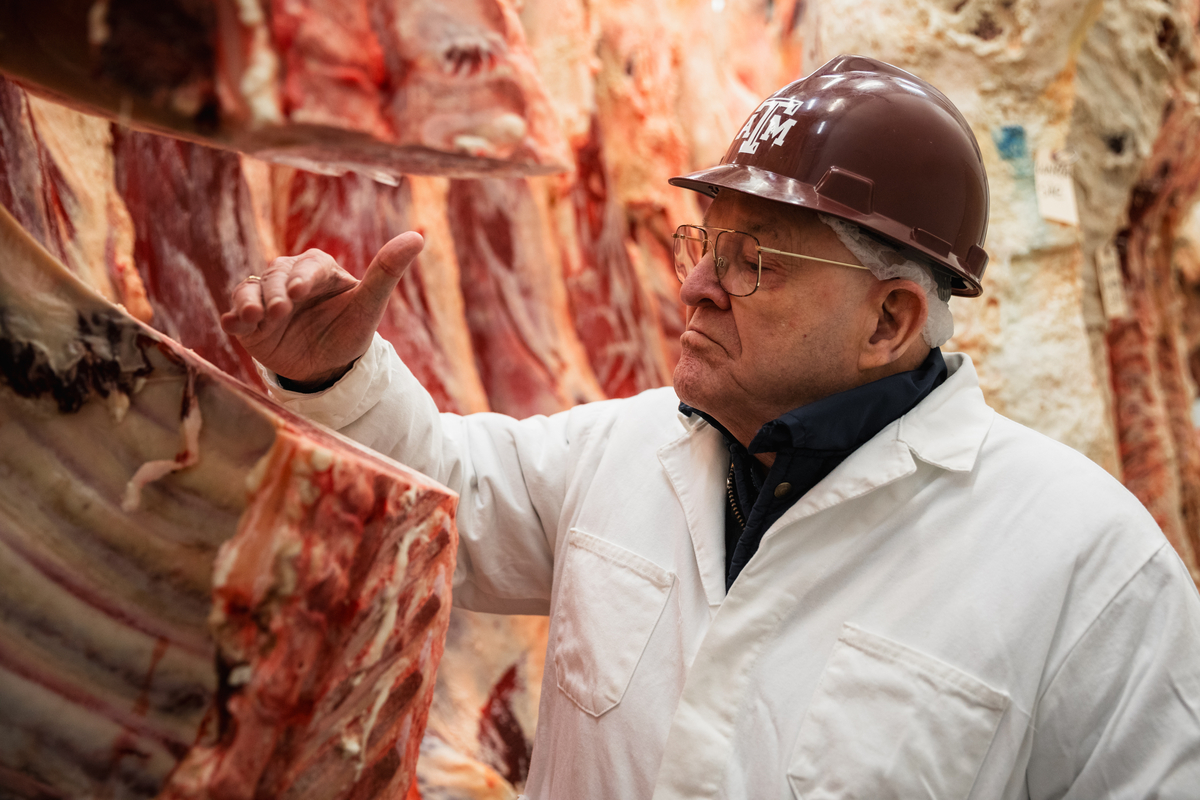
Dean of Meat Scientists
“He’s an icon,” Russell Cross says. “We call him the Dean of Meat Scientists.”
Never one to love the administrative side of academia, Smith found another sweet spot on college campuses—in the classroom.
He has taught thousands of students and mentored hundreds of graduate students. Many of those past students are industry leaders in research, academia and government roles.
“I wish I had a list of all the exceptional students that he has trained, where they are and what they’ve done over the years,” Cross says, when speaking of Smith’s mentorship. “It’s mind-boggling.”
To Cross, a former colleague who worked alongside Smith for decades, Smith’s unique teaching and communication style bring out students’ ideas and inspire them to ask questions.
“I’ve never seen anything like it in my career,” Cross says.
It’s part of what made him such an admired educator and the recipient of many teaching awards. The other part? The genuine care and love he has shown his students.
“I think that’s what a great teacher is,” Smith says. “It’s not a physical love, but it’s a love for those kids.”
Smith recounts that he loves former students like his own children. Students who believed in him as an educator and committed to growing in their own learning, under his teaching and mentorship.
One of those students is Brad Morgan. He claims Smith is a great mentor, a great writer, a perfectionist and a source of credibility.
“From research, writing and authorship, and also [earning] credibility, I probably got more done in the five years I worked with Dr. Smith than a lot of people get done in a career,” Morgan says.
Smith wasn’t afraid to mark up a research article with Wite-Out and red ink. He wasn’t afraid to demand diligence and excellence from his students either. They were in the trenches of research studies with him.
It’s a passion that is still present. It’s not uncommon to see the retired meat scientist in the halls of Texas A&M’s buildings, dropping off news articles and notes he’s meticulously written for those still actively doing research and teaching college courses.
Purpose follows passion—and Smith found purpose in bettering the beef business.
The application of his research findings has improved every sector of the beef community, from the cow-calf rancher to feedyards, packers and end-users. Beyond the practical implications of Smith’s research, he is known for his unmatched work ethic, no-stone-left-unturned research methodology, and ability to build collaborative—and deeply meaningful—relationships with students, colleagues and peers.
“You can measure people by who they had around them, who they trained and the impact that they had,” Cross says. “For Dr. Smith, it’s impossible to measure. He will go down in history as the one who had the greatest impact on the meat science community.”
This story was originally published in the Angus Journal.
You may also like
Healthier Soils and Stronger Herds
Effective land stewardship requires an understanding of how each decision affects forage growth, cattle performance and long-term stocking rates. When land is the foundation of the business, producers are more likely to invest time and resources into managing it intentionally.
Smitty’s Service on CAB Board
Lamb continues to find himself struck by just how far-reaching the Angus breed has become. The brand’s growing demand and rising prime carcasses left a strong impression. He hopes everyone recognizes the vital connection built between consumers and Angus producers. Humbled by the opportunity to serve, Lamb reflects on his time as chairman with gratitude.
Zybach Angus Receives Certified Angus Beef Progressive Partner Award
Steve Zybach’s vision for smaller Angus producers to get more value for their calves through feeder calf sales with value-added programs led him to be recognized as the 2025 CAB Progressive Partner.
